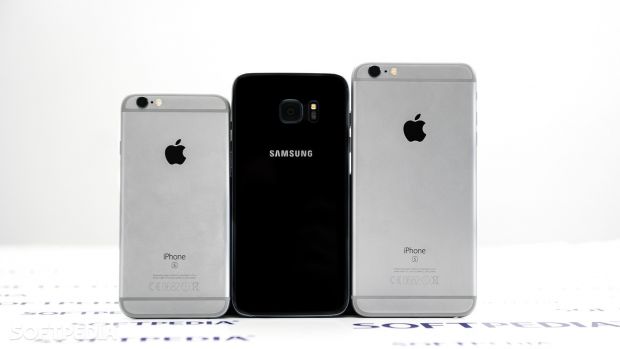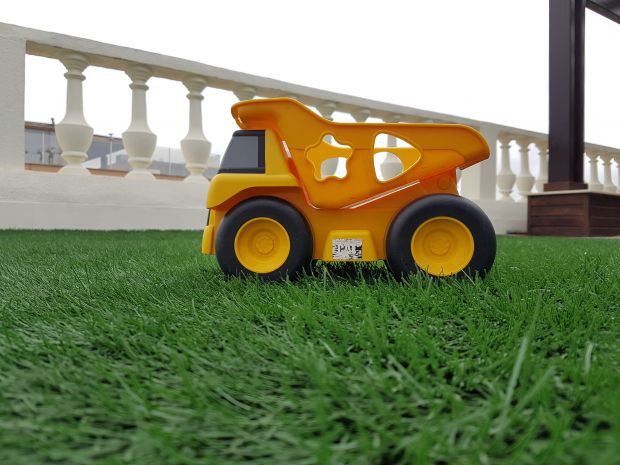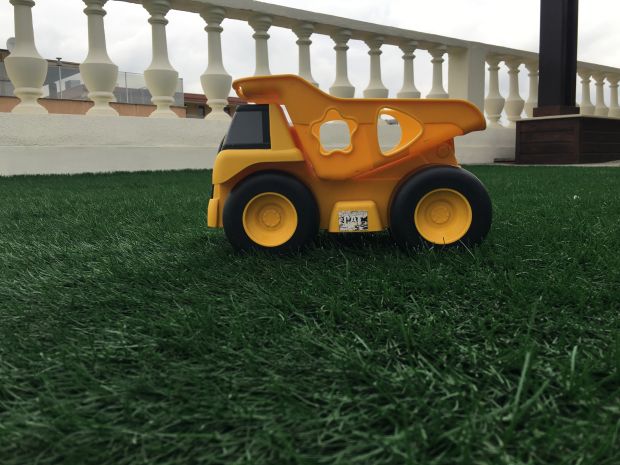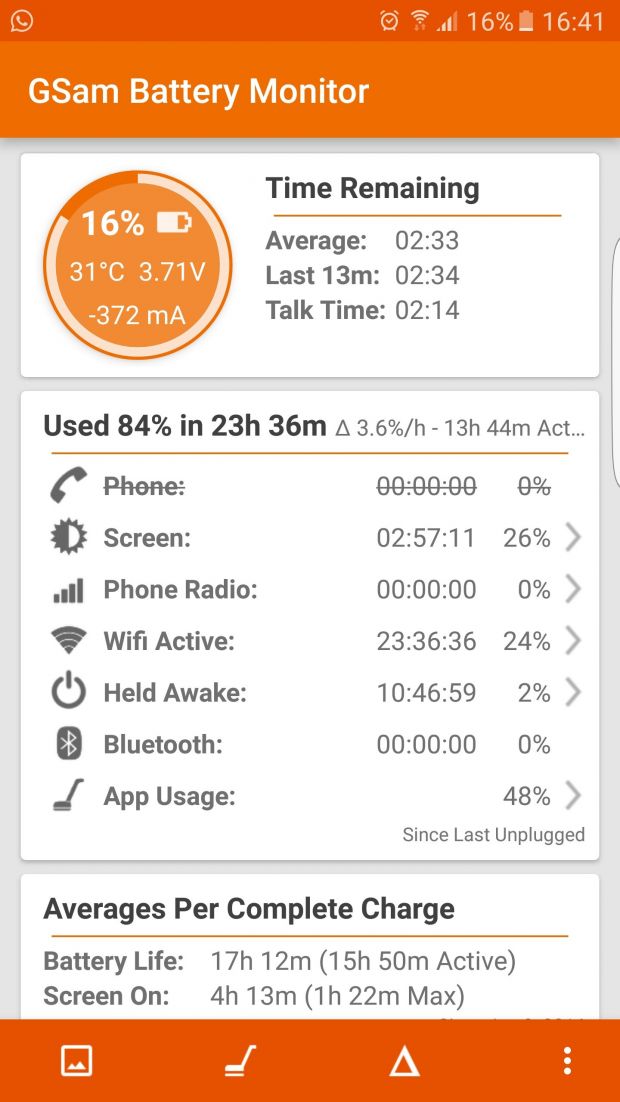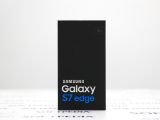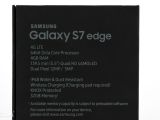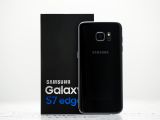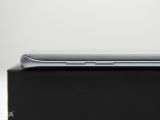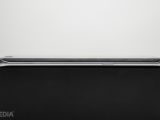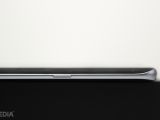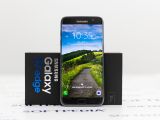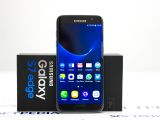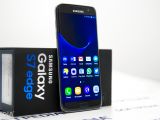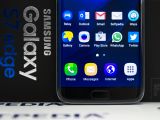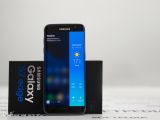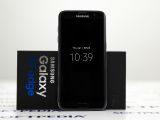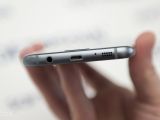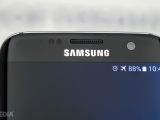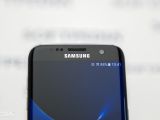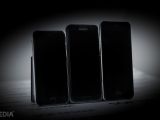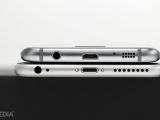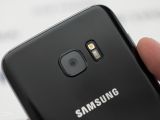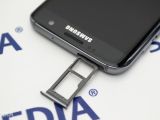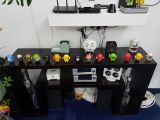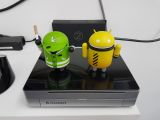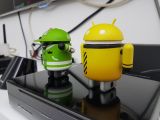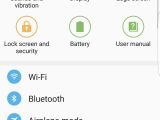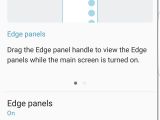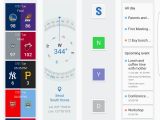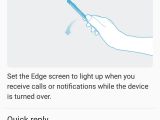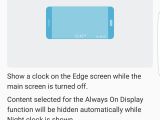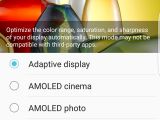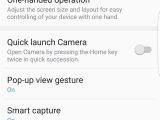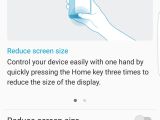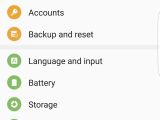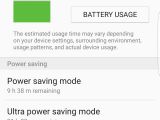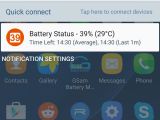| DESIGN AND BUILD QUALITY | HARDWARE |
|---|---|
| CAMERA | BATTERY |
| SOFTWARE | CONCLUSIONS |
Although the Chinese are coming (no pun intended), Samsung is currently pretty much the only company that can compete against Apple in terms of sales, innovation, and build quality - although several other phone manufacturers have improved a lot in this regard (yes, we're looking at you, Huawei!).
So when the company started working on the Galaxy S7 lineup, Samsung wanted the device to be premium from head to toe, trying to offer a luxurious handset that looks better than the previous models, offers innovative features, and has the latest in terms of hardware.
The brand new S7 series got to see daylight earlier this year and is now up for grabs in the majority of markets, with buyers allowed to choose between the standard S7 and the Edge version that comes with curved screen edges.
The Galaxy S7 Edge is currently the best you can get in Samsung's portfolio, at least until the arrival of Galaxy Note 6, which is expected to boast an addition of its own innovations.
But for the moment, the S7 Edge is the best of the best in Samsung's lineup, so after testing the standard S7, we decided to take this bigger model for a spin and see what it's up to. Discover all our findings in the next chapters.
Design and build quality
The Galaxy S7 was designed to be premium, and Samsung clearly accomplished its goal. The South Koreans used only metal or glass for an overall appearance that looks exquisite (glass is on both the front and the back, and metal was used for the surrounding frame).
There's absolutely no plastic on the phone, and the attention to detail is impressive, to say the least. The side buttons are made of metal too, and while the bottom part looks very similar to the S6, which in turn seems to be inspired from the iPhone, it definitely contributes to the premium feel and perfectly blends into the overall design.
As compared to the S6 lineup, the Edge models are now bigger, as the previous versions came with a 5.1-inch screen while this one now has a display of 5.5 inches. This doesn't necessarily mean that it's much bigger, as Samsung spent a lot of time redesigning the bezels.
The Edge has almost no side bezels, which becomes more obvious when you unlock the screen. If you keep it turned off, the black screen matches the black case, and you can barely notice the display margins, so everything blends quite nicely here too. When putting the Edge and the iPhone 6s Plus side by side, Apple's model looks huge and ugly, especially when viewed from the back. The Edge is much easier to carry in the pocket, as it’s a lot smaller than the iPhone despite having the same screen size.
“Tiny bezels and absolutely stunning build quality.”
Both the front and the back of the phone come with curved edges, so its name makes even more sense now than it did for the previous Edge and Edge+ models. The back of the device is similar to the one on the Note5 and comes with curved edges, which really makes it more comfortable to hold in hand, despite the rather thin edges.
But the curved sides helped Samsung make the device look a lot narrower than it actually is. If you compare it with a phone the same size, the S7 Edge looks much more modern and simply seems to be easier to be carried around than other "flat" phones.
The glass front and back, however, have their downsides too. The phone is extremely slippery, and you notice that from the very first minutes of use. Unless you have a sweaty hand, it's really difficult to use it for a longer period of time without having to readjust its position. A case is absolutely needed, and we've found some pretty good ones online (as compared to those manufactured by Samsung, which leave a lot to be desired). Also, note that Samsung used plastic to protect the Flash on the back, so you can scratch it quite easily.
At the same time, the phone's glass construction helped Samsung make it water-resistant, as this type of material is more effective when it comes to waterproofing and isn't damaged in the long term, as is the case with some metals.
All in all, the Galaxy S7 is a modern piece of jewelry, and it's a pleasure to hold it in the hand, at least until it slips. Try to avoid dropping it because we've already seen some units that met the ground, and the result isn't pretty.
Hardware and performance
The Galaxy S7 Edge is the best of the best you can get from Samsung at the moment, so it's only natural to expect it to come with very powerful hardware and with all the features currently available on a mobile device. And the Edge truly delivers.
#Display
First of all, the Edge sports a 5.5-inch display with a resolution of 1440 x 2560 pixels and really small bezels, which make the curved screen really easy to use. The display takes quite a significant part of the phone, and this is living proof that Samsung did a terrific job of reducing the bezel size and in the end offering a much more exquisite design.
The Galaxy S7 Edge has a screen to body ratio of 76.1 percent while the iPhone 6s Plus has only 67.7 percent. The difference is huge and clearly shows that Samsung really focused on making the display the centerpiece of the whole phone.
The Edge also comes with Gorilla Glass 4 on front and back, so it's scratch-resistant. This doesn't mean that you can drop it on the ground, though, as we've seen some units that got through this, and as we've already told you, the result is ugly. The Super AMOLED screen also supports Always-on Display, a new feature introduced on the S7 that keeps the time and missed text and phone notifications on the screen in the same way Microsoft's Glance screen does on Lumia devices.
The S7 Edge is smaller than the iPhone 6s Plus - 150.9 x 72.6 x 7.7 mm (5.94 x 2.86 x 0.30 in) versus 158.2 x 77.9 x 7.3 mm (6.23 x 3.07 x 0.29 in) - and lighter - 157 grams versus 192 grams.
| Display | Super AMOLED capacitive touchscreen |
|---|---|
| Size | 5.5 inches |
| Resolution | 1440 x 2560 pixels |
| Others | Gorilla Glass 4 front and back Always-on Display Curved Edge |
#CPU, RAM, GPU, and storage
The Galaxy S7 Edge is available in two different CPU configurations, depending on the market. Buyers in the United States receive the Snapdragon 820 processor while Europeans (this is also known as international version) get the Exynos 8890 Octa version. They provide similar capabilities, but the Exynos is said to be further optimized for longer battery life. The Snapdragon, on the other hand, is 32 percent faster when it comes to graphics processing power.
Both processors, however, are based on the 14nm FinFET chip, which is currently the smallest available, but the Exynos uses slightly different technology. The big.LITTLE architecture that Samsung employs has two different sets of quad-core CPUs that it uses only when needed - all are brought into play when maximum processing power is required, such as when editing a 4K video.
The Exynos uses four M1 cores, which were specifically optimized for speed and battery life. Benchmarks have shown that they're 30 percent faster than the Exynos 7 siblings used before.
Also depending on the version you choose, the S7 Edge is available in two different GPU variants: Adreno 530 and Mali-T880 MP12, both worthy upgrades over the Mali-T760MP8 used on the Samsung Galaxy S6 Edge+.
There are also 4 GB of RAM and two different storage configurations, 32 GB and 64 GB, with no 128 GB version available. And while that might seem to be a problem, it's not, because the S7 lineup brings back the microSD card slot (placed conveniently in the SIM tray).
It goes without saying that the S7 is a monster when it comes to hardware, but this powerful configuration also keeps the device warm most of the time. When talking on the phone, the S7 Edge feels a little bit warm around the camera and tends to become even hotter when performing more demanding tasks. There are apps, such as Waze, that get it hot quite fast, but we've found cooling to be very quick and effective in all cases.
| CPU | Qualcomm MSM8996 Snapdragon 820 or Exynos 8890 Octa (depending on market) |
|---|---|
| GPU | Adreno 530 or Mali-T880 MP12 (depending on market) |
| RAM | 4 GB |
| Storage | 32 GB/64 GB + microSD card support |
The Galaxy S7 Edge comes with the standard feature lineup as far as connectivity is concerned, so you get Bluetooth 4.2, Wi-Fi, and NFC for Samsung Pay.
But the biggest surprise is that the handset comes with microUSB for charging and data transfers when most phones are already making the switch to USB Type-C. This obviously affects charging time and data transfer speed, but to compensate at least for the first, Samsung has implemented its fast charge system that provides 60 percent of battery life in 30 minutes.
The fingerprint scanner that Samsung installed on the S7 is a huge improvement over the S6, but it's not exactly flawless. It's faster and works even with a wet or dirty finger, but it still fails to detect your fingerprint at certain points, so it doesn't offer the same performance as the one on the iPhone 6s or the Nexus 6P.
Camera
Samsung claims that Galaxy S7 comes with one of the best cameras ever and says that it specifically worked on improving photo quality in low light conditions.
| Rear camera | 12 MP, f/1.7, OIS, 1/2.6" sensor size, 1.4 µm pixel size, simultaneous 4K video and 9MP image recording |
|---|---|
| Front camera | 5 MP, f/1.7, 22mm, dual video call, Auto HDR |
For those who want to know all the details about the new sensor, Samsung has an easy explanation:
"Samsung’s new image sensor with Dual Pixel technology employs two photodiodes located on the left and right halves of a pixel, while a conventional image sensor dedicates less than five percent of its pixels, with one photodiode each that converts light particles into measurable photocurrent for phase detection. As each and every pixel of the Dual Pixel image sensor is capable of detecting phase differences of perceived light, significantly faster auto-focus has become possible."
Photos are thus sharper and feature more vivid colors, no matter the lighting conditions. But is that really so?
In fact, we've noticed that post-processing continues to play a critical role, and you can really see the difference when comparing a photo shot with the S7 and the object in real life. In some cases, the S7 seems to over-sharp every picture, while at the same time adjusting contrast levels and saturation to make colors more vibrating.
In perfect lighting conditions, the S7 shoots amazing photos and all the improvements that Samsung has made really pay off. In low light, the phone performs quite remarkably and seems to shoot brighter photos than most of its rivals (including the iPhone 6s Plus - you can see a photo comparison shot below).
Everything is milk and honey as long as the object or person you photograph is static. As far as dynamic photos are concerned, the fast focus time doesn't seem to bring a major difference as compared to the Galaxy S7, and if you want to take a picture of your dog running, you might be in for a surprise. The amount of blur caused by the rapid movement of the object you focus ruins the photo, so this is where more work needs to be done without a doubt.
The front-facing 5-megapixel camera has been improved as well, but it still seems to inherit the softening processing filters of the Galaxy S6. Selfies look rather artificial, and every person appears to be wearing makeup, as the camera attempts to reduce noise and make images sharper by applying a set of filters that aren't effective all the time.
When it comes to video recording, the Galaxy S7 Edge performs quite well, but there's still one complaint related to stabilization. Despite OIS, some videos tend to be quite shaky, and there's almost no way to fix this unless you're using a tripod. A shaky hand creates shaky videos, and OIS doesn't seem to compensate, or at least, not at the level you'd expect it to do it.
In the end, the Galaxy S7 Edge camera is clearly one of the best out there, but don't expect it to be flawless 100 percent of the time. It still fails to capture dynamic shots at some moments, but it can really take some amazing photos when standing still.
Battery
In terms of battery, the Galaxy S7 Edge is not as impressive as you'd expect it to be, but it's not a letdown either.
The phone comes with a non-removable lithium-ion 3600 mAh battery, which, according to Samsung, should provide a maximum of 74 hours of music playing and talking time or 27 hours on 3G.
The biggest disappointment is that the phone doesn't come with USB Type-C, but with micro USB, and this translates into slower charging and transfer speeds.
To compensate for the slow charging caused by the used standard, Samsung installed its well-known fast battery charging system that can provide up to 60 percent in approximately 30 minutes. The phone takes approximately 100 minutes to charge fully using the charger included in the box, and up to three hours to charge wirelessly with a universal Qi charger.
On average, the Galaxy S7 Edge lasted during our test between 26 and 30 hours, with moderate usage, dropping to 22 hours on heavy usage (this includes streaming, video recording, phone calls, browsing and texting). For a light user, the phone should last for approximately 2 days.
It's very important to note that, during the whole time, we used the phone without the Always On Display feature, which not only eats up around 1 percent of battery every hour but is also quite annoying because only phone calls and messages notifications are shown. Plus, the clock changes its position on the screen, and it's really distracting, especially when working.
Software
The Galaxy S7 Edge comes with Android 6.0 Marshmallow, so it features all the improvements that are part of this version, including Doze, which significantly boosts battery life by cutting down consumption during the night.
Obviously, the S7 features Samsung's TouchWiz, a customized version of stock Android that's supposed to make the OS a bit more user-friendly and easy to use. And since everyone knows TouchWiz, let's talk about a different software improvement: Smart Switch.
Samsung's desktop solution has recently received a significant update that's said to offer user functionality similar to iTunes. This means that you're supposed to create a full backup of the phone and then restore it either on the same device or a different one and have the exact same apps, settings, and backgrounds like before.
“Smart Switch brings significant improvements for backup, but it's just not there yet.”
But don’t trust everything you're being told. The backup indeed saves your photos, wallpapers, icon layout, but no accounts are configured, so you have to set up pretty much all apps that use them. For example, WhatsApp, Waze, and email clients would have to be reconfigured after restoring. This isn't the case of iPhone backups, where a full backup is a full backup.
Creating a backup also takes a lot of time, and so does restoring, so if you plan to do this every once in a while, make sure you have at least 30 minutes to complete the process.
One particular highlight is Samsung's built-in browser, which is pretty fast and works just like any other such app is supposed to. It also supports content blockers, a feature first introduced by Apple in Safari on iOS, so it can offer a much cleaner browser experience.
The S7 Edge comes with the typical bloatware from Google and Microsoft, and you can't remove all of them. Some can be disabled, but you should be really careful because it's believed that a number of apps can have an impact on system performance and stability. Below is a list of apps that are safe to be disabled - of course, it's not complete, and changes could occur over time, but it's still a good place to start if you want to keep your phone in better shape.
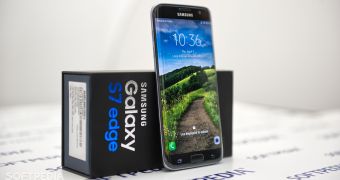
 14 DAY TRIAL //
14 DAY TRIAL // 